Higos en Dulce, also known as higos en Miel, are a traditional Guatemalan dessert made by simmering figs in a sweet, spiced syrup until they become tender and perfectly coated. I love how the figs stay firm and slightly chewy, thanks to soaking them in lime (cal) water before cooking. It’s one of those desserts that I always crave, especially when I want something comforting and familiar.
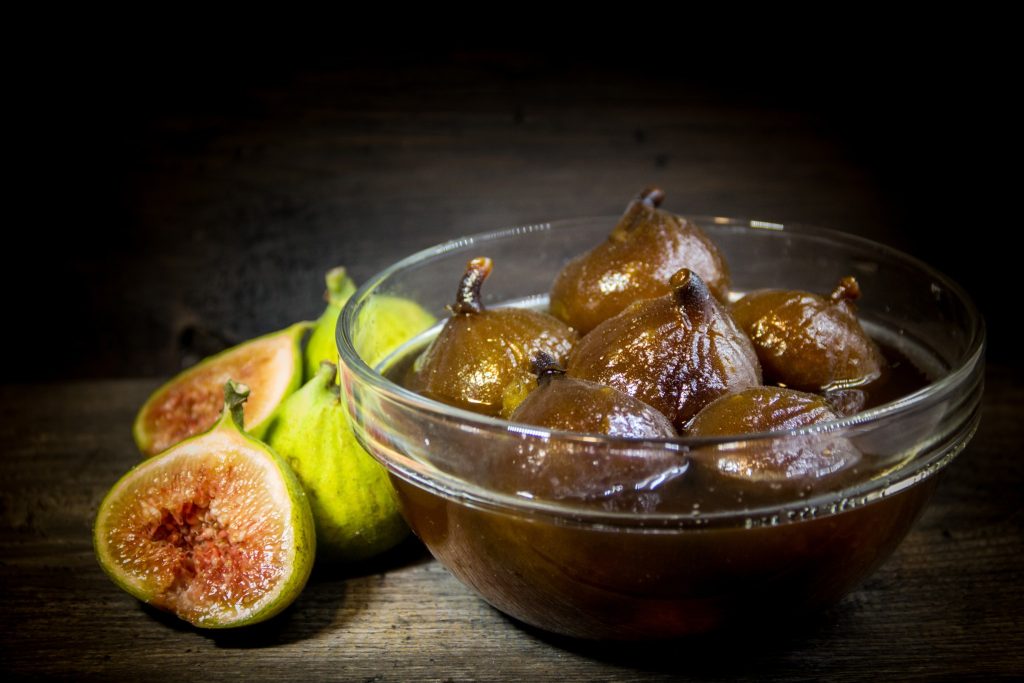
Honestly, I didn’t always know the trick to keeping the figs from turning to mush. The first time I made higos en dulce, I just boiled the figs straight away, and they came out more like a jam than the firm, syrupy treats I remembered from home. A Guatemalan friend of mine set me straight, explaining that soaking the figs in food grade lime and water, a process called nixtamalization, was essential. I couldn’t believe how much of a difference it made! Now, I never skip this step.
Whenever I make these, I always keep them in the refrigerator. There’s just something about eating them cold that makes the syrup taste even better, and the figs have this amazing texture that’s soft but not mushy. It’s like biting into a little piece of nostalgia. Whether you’re making these for a holiday or just to satisfy your sweet tooth, higos en dulce are worth the effort. Trust me, once you taste them, you’ll see why they’re one of my favorite Guatemalan desserts.
If you’re new to making Guatemalan figs in syrup, don’t worry! This recipe is pretty simple, and once you get the hang of it, you’ll want to make it over and over. Let me walk you through it. You’re going to love how easy it is to bring a taste of Guatemala into your kitchen. If you have a fig tree in your backyard, you’re going to love how easy it is to bring a taste of Guatemala into your kitchen.
What Are Higos en Dulce?
Higos en dulce, or igos en miel, are one of those desserts that just take me back to Guatemala. They’re made by simmering ripe but firm figs in a sweet, spiced syrup, and they have this amazing texture that’s soft but still holds together. The secret? Soaking the figs in lime (cal) water before cooking. I didn’t know about this trick at first, but once I learned it, it completely changed how my higos en dulce turned out. Now, they always come out just right—firm, slightly chewy, and never mushy.
When you make these, you’ll simmer the figs slowly with cinnamon, cloves, allspice, and a hint of orange zest. The whole house smells incredible while they cook, and the syrup gets this rich, glossy look that makes the figs just glisten. I like to serve them cold, straight from the fridge. There’s just something about that chilled, syrupy sweetness that hits the spot. You’ll find higos en dulce all over Guatemala, especially during holidays or family gatherings. Once you try them, you’ll see why they’re such a favorite!
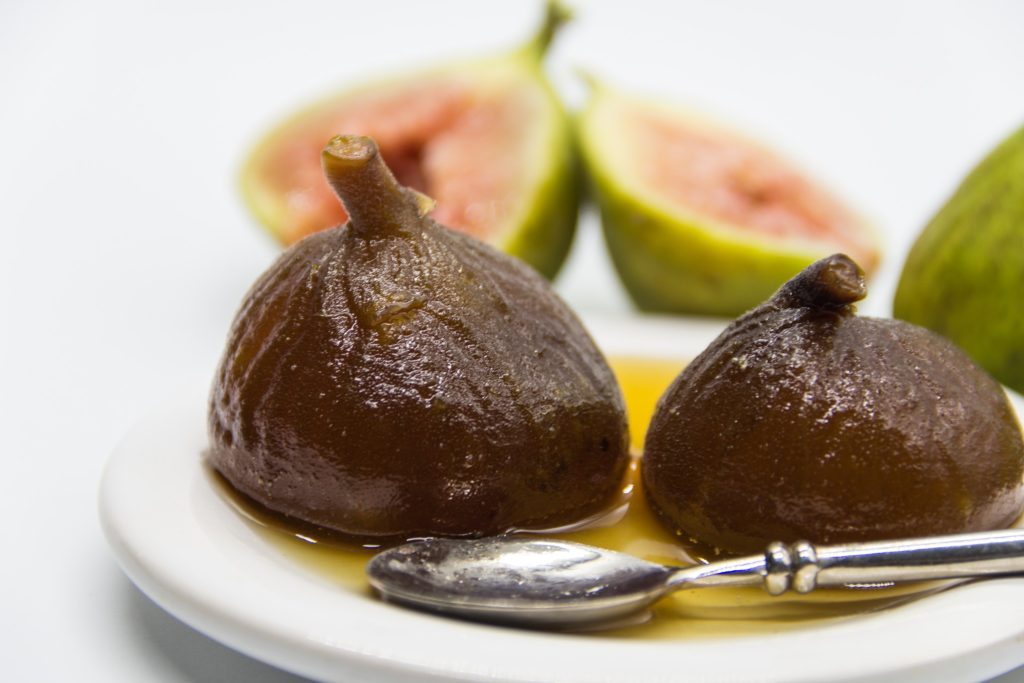
Ingredients for Guatemalan Higos en Dulce
You don’t need a lot to make higos en dulce, which is one of the things I love about this recipe. You’ll just need some ripe but firm figs, a bit of brown sugar, and a few spices to give the syrup that warm, aromatic flavor. I like using Kadota figs because they hold their shape really well during cooking. You’ll also need a bit of cal (food-grade lime) to keep the figs nice and firm—don’t worry, I’ll explain more about that process later.
To give the syrup that signature Guatemalan touch, I use cinnamon, cloves, allspice, and a little orange zest. It makes the whole house smell amazing while the figs simmer. If you want a richer flavor, you can swap the brown sugar for panela. Once everything comes together, you’ll have a sweet, spiced syrup that perfectly coats the figs.
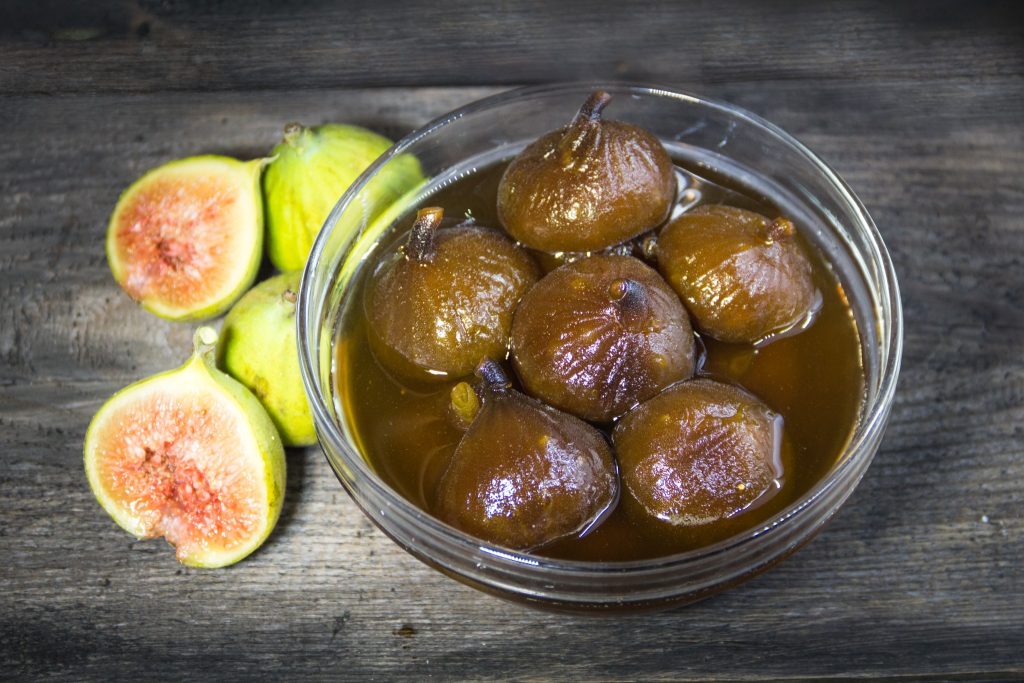
What is Nixtamalization?
Nixtamalization might sound like a complex word, but it’s actually a simple technique that has been used in Guatemala for generations. It’s one of those methods I didn’t fully appreciate until I started making traditional sweets like higos en dulce at home. Basically, it’s a process where you soak ingredients, usually corn, but in this case, figs, in a solution of food grade lime (calcium hydroxide). I can not stress enough that it needs to be food grade lime.
This step is improtant because it keeps the figs firm during cooking, so they don’t turn to mush while simmering in that delicious syrup. And this is what gives the figs that signature slightly chewy texture and rich flavor that makes this traditional Guatemalan dessert so special.
I love that this technique has roots in ancient Maya and Aztec traditions. It makes preparing this Guatemalan dessert special for me, making me feel closer to my Mayan roots. In Guatemala, nixtamalization isn’t just used for figs. It’s also used in other Guatemalan traditional candy recipes like chilacayotes en dulce, where the food grade lime helps the chilacayote (a type of squash) harden and become candied. If you’re curious about trying more Guatemalan recipes that use nixtamalization, definitely check out my chilacayotes en dulce recipe.
Best Figs for Higos en Dulce
When you are making higos en dulce, it’s important to choose ripe but firm figs. I like to use kadota figs because they have a mild sweetness and a texture that holds up well during cooking. They’re perfect for this recipe so that it is not too sweet. If you can’t find kadota figs, or if you don’t have food grade lime at home and want to make this recipe use black mission or brown Turkey figs which are firmer and hold their shape better. Just make sure they’re not too ripe or feel too soft, as they can break apart during the cooking process.
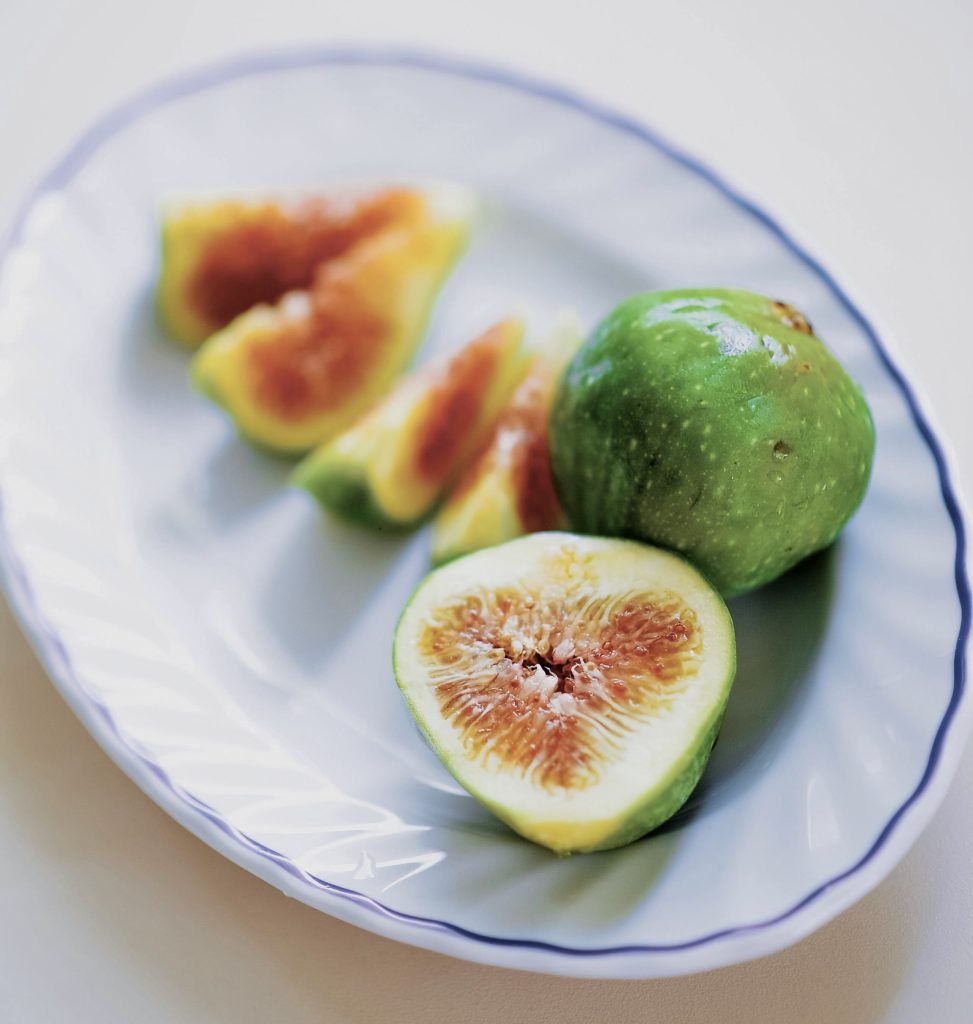
Tips for Perfect Higos en Dulce
To make the best higos en dulce, here are a few tips that will help you get that perfect texture and flavor every time:
-
Pick the Right Figs: Go for ripe but firm figs. If they’re too soft, they might fall apart during cooking, even with the lime soaking. Kadota figs work great because they hold their shape.
-
Use Food Grade Lime for Firmness: Soaking the figs in lime water is key to keeping them from getting mushy. This step, known as nixtamalization, helps the figs stay firm while simmering. Just make sure to use food-grade lime, which you can find in most Latin grocery stores.
-
Soak for One Hour: Let the figs sit in the lime water for about an hour. This gives them enough time to get that slightly chewy texture without becoming too tough.
-
Cook the Syrup Low and Slow: Use low heat when making the syrup. Let the sugar dissolve slowly, and the spices (cinnamon, cloves, allspice) blend in. Stir now and then to keep it smooth and glossy.
-
Add Figs Once Syrup Thickens: Wait until the syrup has thickened a bit before adding the figs. This way, they’ll soak up the flavor without breaking down.
-
Stir Carefully: The figs will be tender after boiling, so handle them gently when mixing them with the syrup. You don’t want them to fall apart.
-
Let Cool Before Storing: Once they’re done, let the figs cool in the syrup before putting them in a container. This helps the flavor set, and the syrup gets nice and thick.
-
Serve Them Cold: Higos en dulce taste best straight from the fridge. The chilled syrup adds a nice contrast to the tender figs, making them even more delicious.
By following these tips, you’ll end up with the perfect balance of sweet, spiced syrup and firm figs, just like in the most authentic Guatemalan recipes.
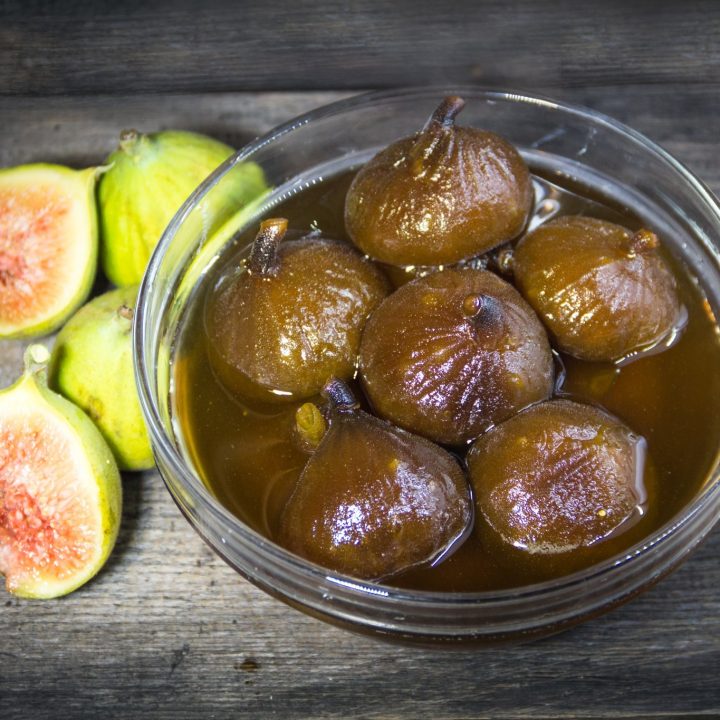
Guatemalan Higos en Dulce Recipe (Higos en Miel)
Ingredients
- 24 ripe but firm figs (Kadota, black mission or brown Turkey figs)
- 1 teaspoon of food grade lime (Calcium Hydroxide, Slaked Lime)
- 1 1/2 cups brown sugar (or to taste)
- 1 cinnamon stick
- 4 cloves
- 5 allspice berries
- Zest of one orange
- 4 cups water (for soaking)
- 2 cups water (for syrup)
Instructions
Prepare the Figs:
Make a cross-shaped incision at the bottom of each fig. This will help the syrup penetrate the fruit evenly.
Soak the Figs:
Dissolve the cal or food grade lime (Calcium Hydroxide) in 4 cups of water to make lime water. Place the figs in a large bowl and cover them with the lime water. Let the figs soak for 1 hour to maintain their firm texture.
Rinse and Boil:
After soaking, drain and rinse the figs thoroughly to remove any residual lime. In a large pot, add the figs and cover with 2 cups of fresh water. Bring to a boil and cook for about 15 minutes, or until the figs become slightly tender. Carefully drain the figs and set them aside to cool.
Prepare the Syrup:
In a separate pot, combine the brown sugar, cinnamon stick, cloves, allspice berries, orange zest, and 2 cups of water. Cook over low heat, stirring occasionally, until the sugar dissolves and the syrup thickens slightly. This will take about 10-15 minutes.
Simmer the Figs:
Add the figs to the thickened syrup and continue to cook on low heat. Let the figs simmer gently, stirring occasionally to coat them evenly with the syrup. Cook until the syrup becomes thick and glossy, and the figs are well coated.
Cool and Serve:
Remove from heat and allow the figs to cool in the syrup. Transfer to an airtight container and refrigerate for at least 4 hours before serving. Higos en dulce are best enjoyed cold, straight from the refrigerator.
Notes
I can not stress this enough make sure to use food grade lime, Industrial grade lime is not safe for consumption and can be poisonous.
Variations and Serving Suggestions
I love to eat higos en dulce cold, straight from the refrigerator. That chilled, spiced flavor combined with the firm texture just hits differently. While they’re delicious on their own, you can definitely get creative with how you enjoy them.
One variation I love is swapping brown sugar for panela when making the syrup. It gives the figs a richer, almost molasses-like flavor. You can also add a splash of vanilla for a subtle, aromatic twist. If you want a hint of tartness, throw in a few slices of fresh orange while the syrup simmers.
Even though I usually eat higos en dulce by themselves, some people add a slice of fresh cheese to balance the sweetness. I’ve also used the leftover syrup as a topping for pancakes or ice cream because you don’t want to waste a drop of this delicious syrup.
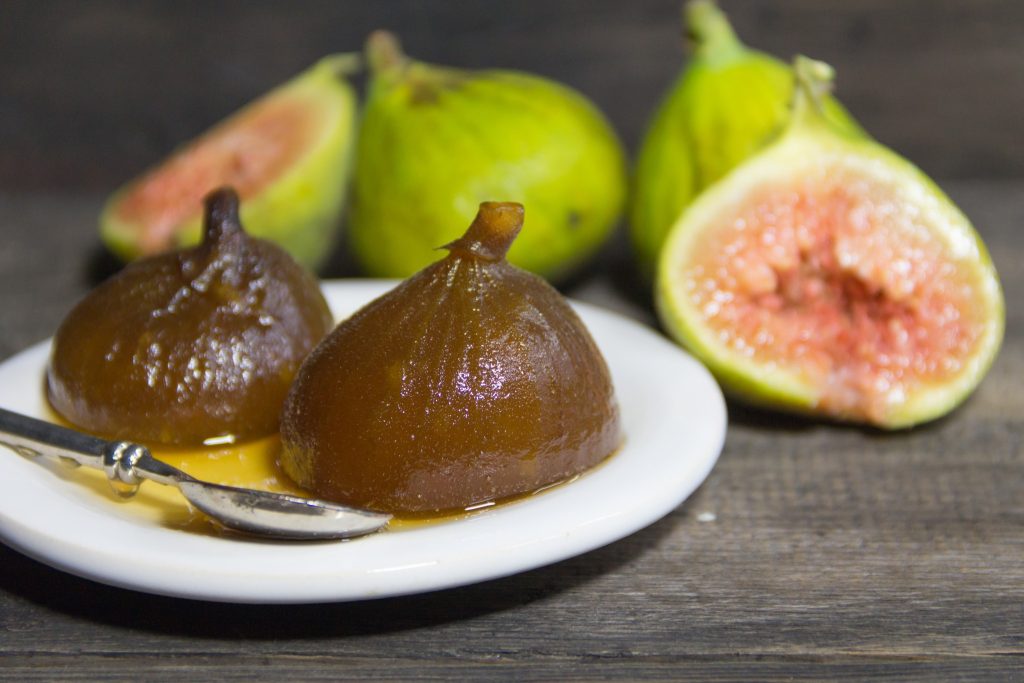
Storing and Shelf Life
I always store my higos en dulce in an airtight container in the refrigerator. Once they’ve cooled completely, I transfer the figs along with the syrup into a glass jar or a well-sealed container. Keeping them chilled helps the figs stay firm and lets the syrup keep infusing them with that rich, spiced flavor.
These Guatemalan figs in syrup can last up to two weeks if you store them properly. Just make sure the container is tightly sealed to keep moisture or air out. I never leave them at room temperature for too long because the syrup can start to ferment, which changes both the taste and texture.
If you want to make them last even longer, you can preserve them by canning. Just follow proper sterilization techniques, and you’ll be able to enjoy this traditional Guatemalan dessert for months.
More of My Favorite Guatemalan Dessert Recipes
If you loved making higos en dulce, you’re going to want to try some of my other favorite Guatemalan desserts. These are the recipes that bring me right back to family gatherings and holidays in Guatemala. Each one has its own unique flavor and story, and I can’t wait to share them with you!
Torrejas:
Torrejas are like Guatemalan-style French toast, soaked in a sweet syrup made with panela, cinnamon, and cloves. They’re soft, fragrant, and perfect for Easter or any special occasion. Check out my recipe for torrejas to learn how to make this comforting dessert at home.
Rellenitos de Plátano:
Rellenitos de Plátano are made with sweet plantains stuffed with a rich black bean and chocolate filling, then fried to perfection. The combination of sweet and savory makes these an unforgettable treat. I love serving them warm with a sprinkle of sugar. You’ll love my rellenitos de plátano recipe!
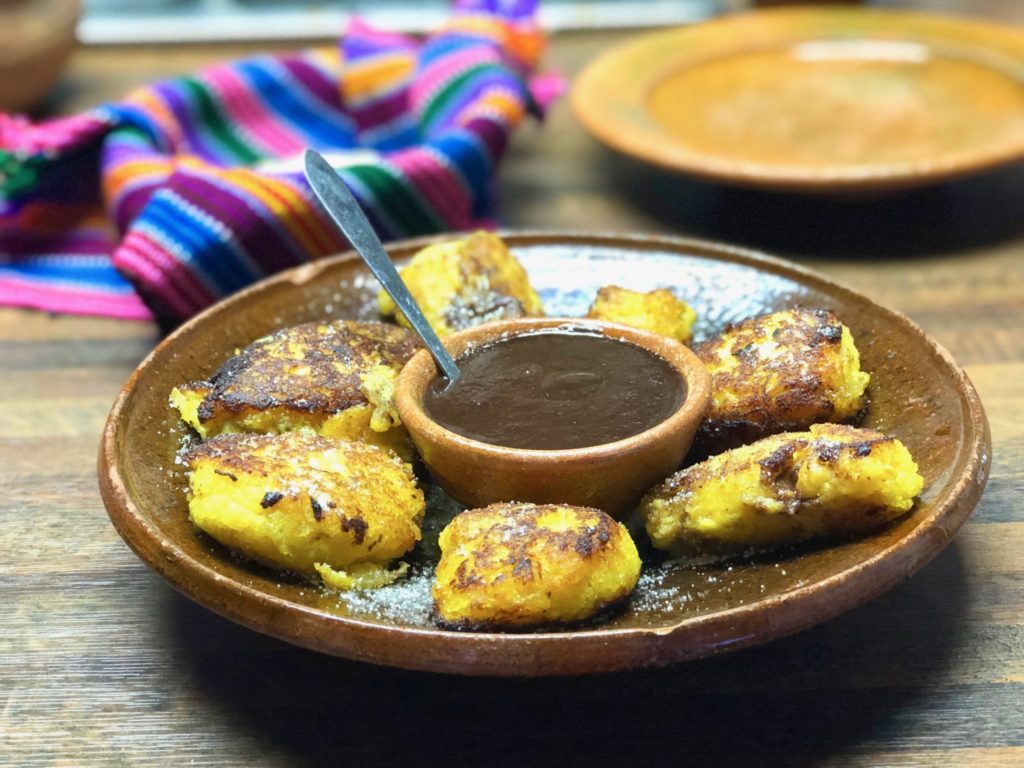
Buñuelos:
Buñuelos are light, airy fritters drizzled with a sweet syrup made from brown sugar and spices. They’re crispy on the outside and soft on the inside—an irresistible holiday favorite. I make them every year for Christmas, and they never last long! Make sure to check out my buñuelos recipe.
Empanadas de Manjar:
Empanadas de Manjar are flaky, tender pastries filled with a creamy, sweet custard. They’re perfect for breakfast or as an afternoon snack with coffee. I always make a big batch because they disappear fast! Try my recipe for empanadas de manjar and taste this delicious Guatemalan treat.
Ayote en Dulce:
Ayote en Dulce is a comforting dessert made with squash cooked in a sweet, cinnamon-infused syrup. It’s one of those cozy, traditional dishes that I always look forward to during the holiday season. If you love warm, spiced flavors, you have to try my ayote en dulce recipe!
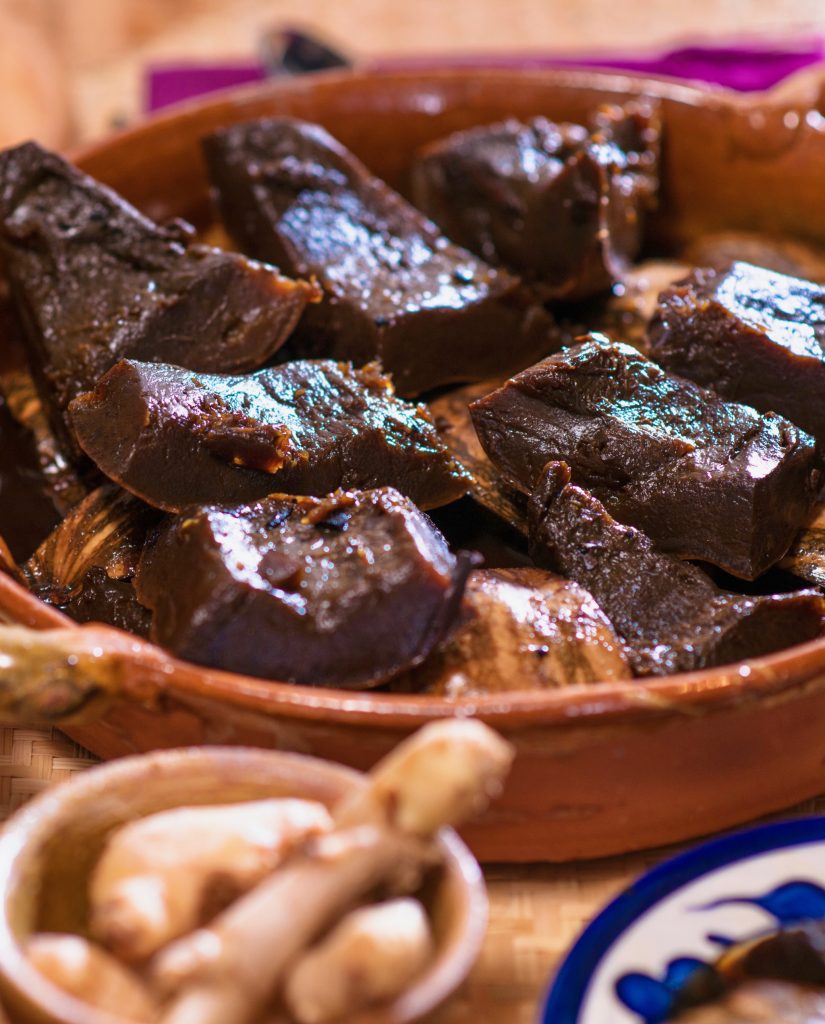
Champurradas:
Champurradas are crunchy, slightly sweet cookies that are a staple in Guatemalan bakeries. They’re simple, but their crisp texture and light sweetness make them perfect for dipping in coffee. You can’t go wrong with a batch of homemade champurradas! Check out my recipe to make them from scratch.
It doesn’t matter which one you try first—each of these desserts is a delicious way to experience a bit of Guatemala at home. Let me know which one you make, and I’d love to hear how it turns out!
- Cranberry Brie Cake Grazing Board (An Elegant Holiday Cheese Centerpiece) - December 19, 2025
- Easy Cranberry Cocktails You Can Make All Year - December 18, 2025
- Christmas Mulled Wine (A Classic Holiday Mulled Wine Recipe) - December 18, 2025


